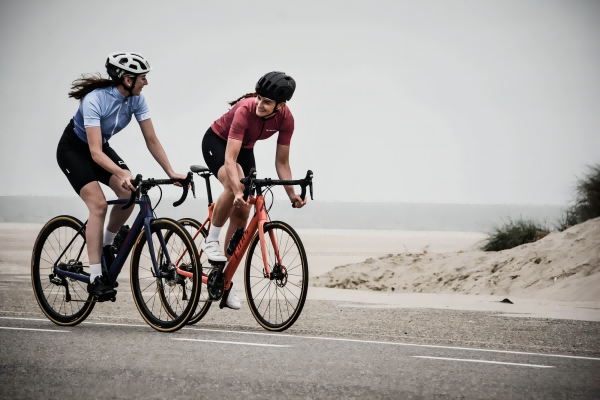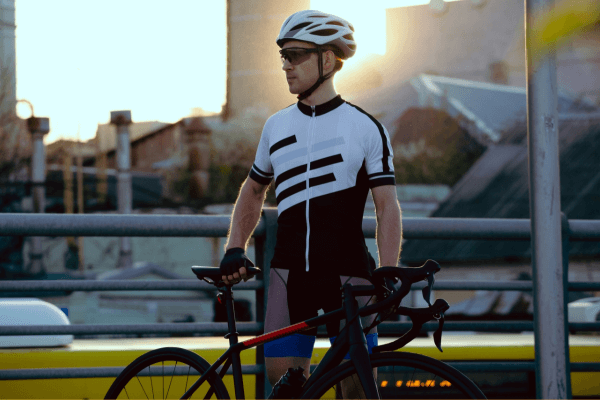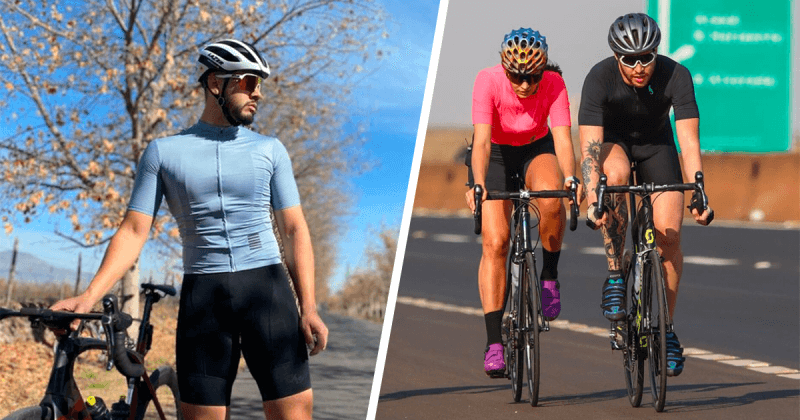Choose the right cycling clothing for you
Cycling is an exciting activity that combines the thrill of road riding with the benefits of physical fitness and adventure. Whether you are an experienced cyclist or just beginning your adventure, choosing the right cycling clothing is essential for optimal performance and comfort. You can significantly improve your cycling experience by ensuring you have the right equipment, which will help you stay comfortable, safe and confident. However, one of the most important considerations when choosing cycling clothing is to ensure that the clothing fits your body type.

One way to improve your comfort and performance on the bike is to gain the necessary knowledge to choose cycling clothing that fits your specific body type. Many factors go into choosing the right clothing, including fit, fabric, practicality and style of cycling clothing.
Cycling clothing fit is important
On the bike, the way your riding apparel fits has a big influence on both your level of comfort and your level of efficiency. Having garments that do not fit properly may result in pain, chafing, and a decrease in performance. When it comes to the fit, the following are some important considerations:
The clothing that is created for cycling is intended to have a tight fit against the wearer’s body. Because of this, air resistance is reduced, and cloth is prevented from flapping in the wind, which might cause you to move more slowly. Additionally, a tight fit assists with moisture wicking, which helps to keep you dry and feels comfortable.
Aerodynamics: Aerodynamics is an important consideration for cyclists who compete in competitive events. A jersey and bib shorts that fit you well may improve your aerodynamics, therefore lowering the amount of drag you experience and enabling you to ride more quickly with less effort.
Freedom of Movement: Although it is essential to have a close fit, the clothes you wear should not impede your ability to move about. Make certain that the equipment you are using permits a complete range of motion, especially in the shoulders, arms, and legs regions.
Acquiring Knowledge about Your Body Type
Understanding your body type is the first step in selecting the appropriate cycling clothing for you. Everybody’s body is different, and it is important to realize this. Here is a list of typical body kinds, along with some particular advice for each one:
Build for Athletics:
Shoulders that are broad, a strong frame, and hips and waist that are thin are characteristics.
It is recommended that you choose jerseys and bib shorts that have a racing cut, which is a cut that is meant to fit snugly to an athletic body. In order to accommodate muscle bulk without limiting mobility, you should look for materials that have a strong stretch potential. Take into consideration garments that have reinforced seams and are made of high-quality fabric to guarantee their longevity.
Form of a Pear:
Characteristics include hips and thighs that are wider, shoulders and waist that are smaller.
You should choose bib shorts that have a higher waistband in order to get more support around the middle of your body. When shopping for jerseys, look for ones that have a looser fit in the hip region but a narrower fit in the shoulders and chest. Consider using longer jerseys so that you can have more covering and prevent any riding up while you are out on your cycle.
Form of an Apple:
Characteristics include a wider waist, hips, and legs, and a smaller waist.
It is recommended that you choose jerseys that have a more relaxed fit around the waist but a more snug fit at the shoulders. A smoother silhouette may be achieved by wearing high-waisted bib shorts, which can also aid give support. Look for fabrics that have a high breathability so that you can maintain a comfortable temperature.
Tall and slender:
Long limbs, a thin physique, and a low body fat percentage are characteristics.
A helpful hint is to wear longer jerseys and bib shorts so that you can guarantee enough covering. In order to suit your height, you should look for companies that can provide tall sizes. If you want to minimize gaps between your jersey and shorts, you should think about layering choices when the temperature is colder.
Concise and Rock-Solid:
Shorter limbs, stockier body, larger chest and shoulders are some of the characteristics of this subtype.
To prevent excessive fabric bunching, it is recommended that you look for jerseys and bib shorts that have a shorter cut. In order to create a comfortable fit without being excessively tight, it is important to use fabrics that have a decent elasticity. If normal sizes do not provide a favorable fit, you may want to think about custom-fit solutions.

A Look at Some Important Characteristics of Cycling Garments
There are some characteristics that are required for any riding clothes, regardless of the body type of the wearer. Here are some things to keep an eye out for:
Fabric that wicks away moisture Cycling is a sport that may cause you to sweat, therefore it is essential to wear a fabric that can wick away moisture in order to keep you dry and comfortable. Try to find fabrics that are especially developed for athletic wear, such as polyester, nylon, or combinations of these materials.
The capacity to breathe is essential if you want to maintain a comfortable temperature while you are riding. Keep an eye out for jerseys that include ventilation zones or mesh panels that allow for greater airflow circulation.
As a matter of necessity, padded shorts or bibs are required for extended rides. By providing cushioning and reducing friction, the padding, also known as chamois, contributes to an increased level of comfort on the saddle.
Chafing may be caused by seams, particularly during lengthy rides, hence seamless designs are preferable. Seamless or flatlock seams are more comfortable overall and lessen the amount of friction that occurs.
When riding in low-light settings, safety is of the utmost importance, and reflective elements are an essential component. The presence of reflective materials on your clothes increases your visibility to drivers and other people who use the road.
There are pockets on your jersey that can contain items such as food, a phone, or a small repair kit. Your jersey should include pockets since it is crucial to be practical.
In Search of the Appropriate Jersey
Wearing a bike shirt is an essential component of your equipment. If you want to pick the perfect one for your body type, here is how to do it:
Fit and Cut: Jerseys are available in a variety of cuts, ranging from club fit to racing fit sizing. Race fit jerseys are more aerodynamic and tight, making them ideal for athletic builds. This kind of jersey is perfect for casual riders or those who have a wider waistline since it is looser and more forgiving than other types of jerseys.
How Long Should Your Sleeves Be? Your sleeves should be long enough to cover your upper arms, but they shouldn’t be so long that they hinder circulation. Some jerseys are designed with longer sleeves to improve the aerodynamics of the garment.
Full-zip jerseys are more convenient to put on and take off than other types of jerseys because they allow for improved ventilation. Jerseys with a half-zip closure have a more streamlined appearance, but they provide less versatility in terms of controlling ventilation.
While you are riding, you should look for jerseys that have a silicone gripper at the hem to ensure that they remain in place. This stops the jersey from riding up and exposing your lower back, which would otherwise come about.
How to Determine Which Bib Shorts Are Best
Shorts with a bib are another component of your riding attire that is very necessary. Here are some things to take into consideration:
The straps that are included with bib shorts are designed to be worn over the shoulders. Make certain that the straps are not uncomfortable and do not irritate your skin in any way. If you want greater support, look for straps that are broad and flexible.
With regard to the length, the shorts have to be a little bit longer than the knee. However, if they are too long, they may hinder mobility, and if they are too short, they may not offer sufficient covering.
The cushioning, often known as the chamois, is an essential component for comfort. Keep an eye out for multi-density padding that provides support in the areas where you need it the most. Not only should the padding be thick enough to give comfort, but it should also not be so thick that it becomes cumbersome.
Leg Grippers: Just like jerseys, bib shorts should have silicone grippers at the leg openings to stabilize them and prevent them from riding up. This is similar to how jerseys are designed.
Putting on Different Layers for Each Season
It is necessary to wear suitable layers while cycling throughout various seasons in order to maintain comfort:
In the summer, choose materials that are breathable and lightweight. The majority of the time, a jersey with short sleeves and bib shorts are adequate. If you want to keep perspiration away from your skin, you might think about adding a base layer.
Layering becomes vital throughout the spring and fall seasons. Begin with a base layer, then add a jersey with long sleeves, and you may want to think about adding a lightweight jacket or vest for additional warmth. If you find that you are becoming too warm, you may effortlessly remove the arm and leg warmers.
Insulation is essential throughout the winter months. When looking for warm clothing, thermal jerseys and bib tights with a brushed inner are good options. In order to protect yourself from the cold, you should wear a hat, gloves, and a windproof jacket. It is vital to add a base layer that wicks away moisture in order to maintain a dry state.

Final Thoughts
In order to choose cycling clothing that works for your body type, it’s important to understand your specific body shape and choose gear that’s not only comfortable but also fits well and improves your performance. By focusing on fit, fabrics, and key features, you can create a set of cycling clothing that will make you feel confident and ready for any ride. Whether you’re preparing for an easy ride or an intense training session, wearing the right clothing can have a major impact on your cycling experience.



